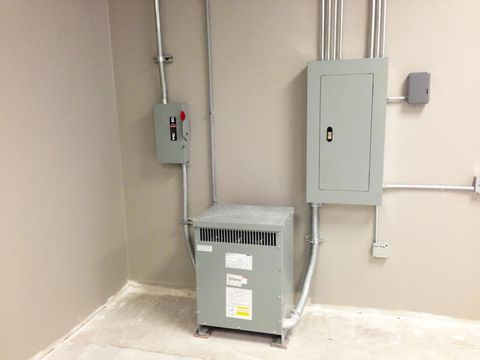SWITCHES, BREAKERS & PLUGS
Shock, Fire, and Damage Prevention

Thanks to the invention of GFCI plugs, or “ground fault circuit interrupters”, the risk of severe bodily injury or electric shock by installing or updating plugs has significantly decreased.
Today, the GFCI outlets are standard equipment required in areas within six feet of a sink or any other plumbing fixture. In other words, GFCI outlets should be installed in bathrooms, kitchens, laundry rooms, outdoors, etc.
"Apart from being an important preventive measure in your home, the installation of GFCI outlets is actually required by law".
According to the National Electric Code (NEC), all homes must be equipped with some kind of GFCI protection. Perhaps, one reason for this is that each year almost 51,000 fires are created and 3,000 non-fatal shocks are caused by faulty electrical wiring and unsafe malfunctions in the United States alone. 50% of this, however, could be prevented by the installation of GFCI wall outlets.
What’s So Different About GFCIs?
Aside from the protection they provide, GFCI outlets are very similar in appearance to a standard wall outlet. The important safety devices are available in the same colors and designs as their counterparts. The main differences between the two are the buttons located on the face of the GFCI. The two buttons “test” and “reset” are there to provide you with an easy way to check the outlet to verify it is working properly. Pressing the test button on the face of the GFCI receptacle should trip the outlet and kill the power flowing to the lamp or meter. Pressing the reset button will restore power to the outlet.
It’s never too late to update bad plugs inside your home to code. If you are unsure of the outlets in your house or are experiencing issues regarding the safety of your appliances, call a licensed electrician to inspect and upgrade your plugs to a safe standard.
Shock happens, don’t let it happen to you.

Contact Info
210-545-2658
e-mail us
18847 Redland Road, Suite 105
San Antonio, Texas 78259
Hours (Monday - Friday) 8am - 4pm
License number:
TECL26658
Contact Us
Thank you for contacting us.
We will get back to you as soon as possible
We will get back to you as soon as possible
Oops, there was an error sending your message.
Please try again later
Please try again later

Contact Info
18847 Redland Rd, Ste 105
San Antonio, TX 78259
Hours (Monday - Friday) 8am - 4pm
License number:
TECL26658
Contact Us
Thank you for contacting us.
We will get back to you as soon as possible.
We will get back to you as soon as possible.
Oops, there was an error sending your message.
Please try again later.
Please try again later.



